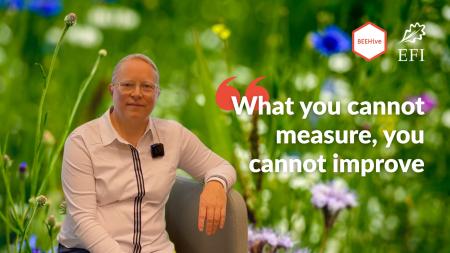
Land use change is the primary driver of biodiversity loss. But with a circular bioeconomy, it is possible to reduce the land area needed for biomass production, while also recycling fibres and capturing carbon dioxide.
In a recent interview, Erika Winquist, Senior Scientist from Luke and coordinator of CircHive, explains why biodiversity matters for the circular bioeconomy, introduces the core components of the CircHive project, highlights BEEHive, and shares that she looks forward to the European Business and Nature Summit this year in Helsinki, Finland.
CircHive: how to link life cycle assessment and natural capital accounting
CircHive is building bridges between life cycle assessment (LCA) and natural capital accounting (NCA), aiming to deliver more accurate insights into how production and consumption impact biodiversity.
“What you cannot measure, you cannot improve,” Erika says.
Watch this interview with EFI researcher Mohammad Naji, who offers a perspective on integrating life cycle assessment with NCA to capture biodiversity impacts better.
BEEHive: the hive is taking shape
CircHive’s BEEHive is a community where businesses, researchers, and policymakers can exchange the latest thinking on biodiversity footprinting and natural capital accounting. It brings together stakeholders from across various hubs, including biomaterials, food, retail, finance, and green cities.
Stay tuned for the official BEEHive launch – and join the conversation shaping the future of biodiversity in the circular bioeconomy.
Featured image: Ruudmorijin from Getty Images / edited in Canva